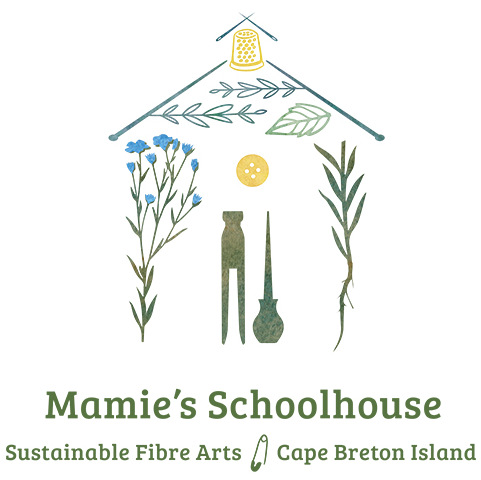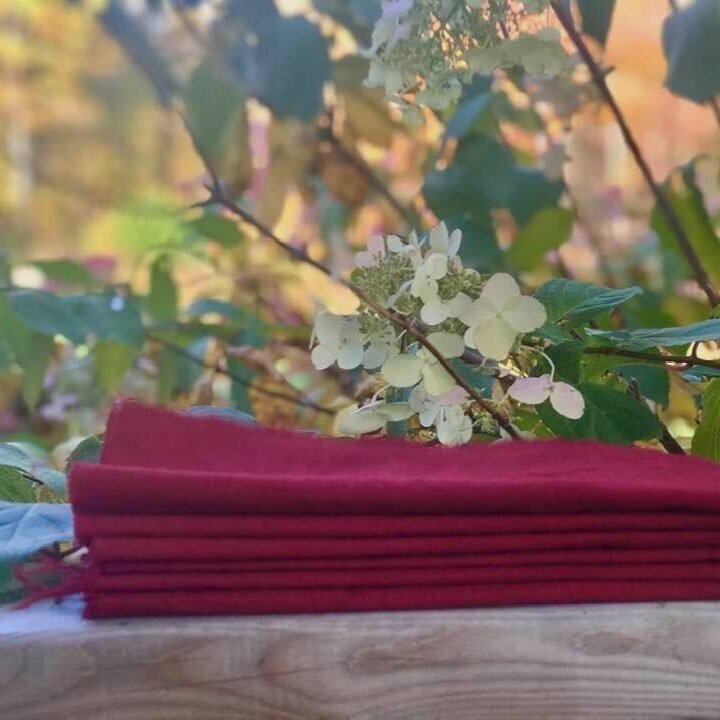Self-directed course always open for registration.
PREREQUISITE: Intermediate to advanced natural dye practice.
You should be able to achieve consistently excellent results scouring by fibre type.
You should understand what mordants, modifiers, and dye assists are. However, how to use them for Turkey Red is demonstrated and explained in detail in the course.
Starts: as soon as you register
Ends: Late October, or at your own pace, as you have 1 year access to all course materials.
Scroll below for pricing information and registration links.
“Absolutely loved the experience of turkey red dyeing ... thank you Mel for designing a fabulous course and for being so responsive to student needs and inquiries. The videos plus written instruction were a perfect balance for learning a new and complex skill. I heartfully recommend the turkey red dyeing course for those who like to go the extra distance in achieving beautiful colours with natural dyes, in this case, red! ”
overview…
If you are looking to engage in more structured, comprehensive learning on this enigmatic, historic dye, and are an intermediate to advanced natural dyer, this course is for you.
In my teaching, I always emphasize that great results require skill, skill comes from knowledge and practice, and knowledge and practice take effort and time, and that is especially true of the time-consuming historic dye process known as Turkey Red. But the reward for a commitment to this lengthy, very hands-on dye process is possibly the most glorious reds ever produced on cellulose fibres, with superb fastness properties.
As natural dyers know, it is generally much more difficult to achieve rich, deep colour on fibres made from the Plant Kingdom than on those from the Animal Kingdom. But the historic Turkey Red Dye process achieved a breakthrough in this regard, creating stunningly rich colour on cellulose, particularly cotton, that is also very fast to light, washing, perspiration, and abrasion.
Under expert guidance, you will be shown how to recreate every step of this historic process to produce your own beautiful Turkey Red Dyed fibres. The method taught in this course predates the invention of industrial Turkey Red Oil in the 19th century. Instead, students learn to make their own oil from scratch, using simple, easy to obtain ingredients. Along the way, you’ll also learn about the chemistry of Madder and of the Turkey Red process, and about Turkey Red Dye traditions from various regions, in order to support you in becoming a knowledgeable custodian of this historically significant dye method.
student results on various fibres…
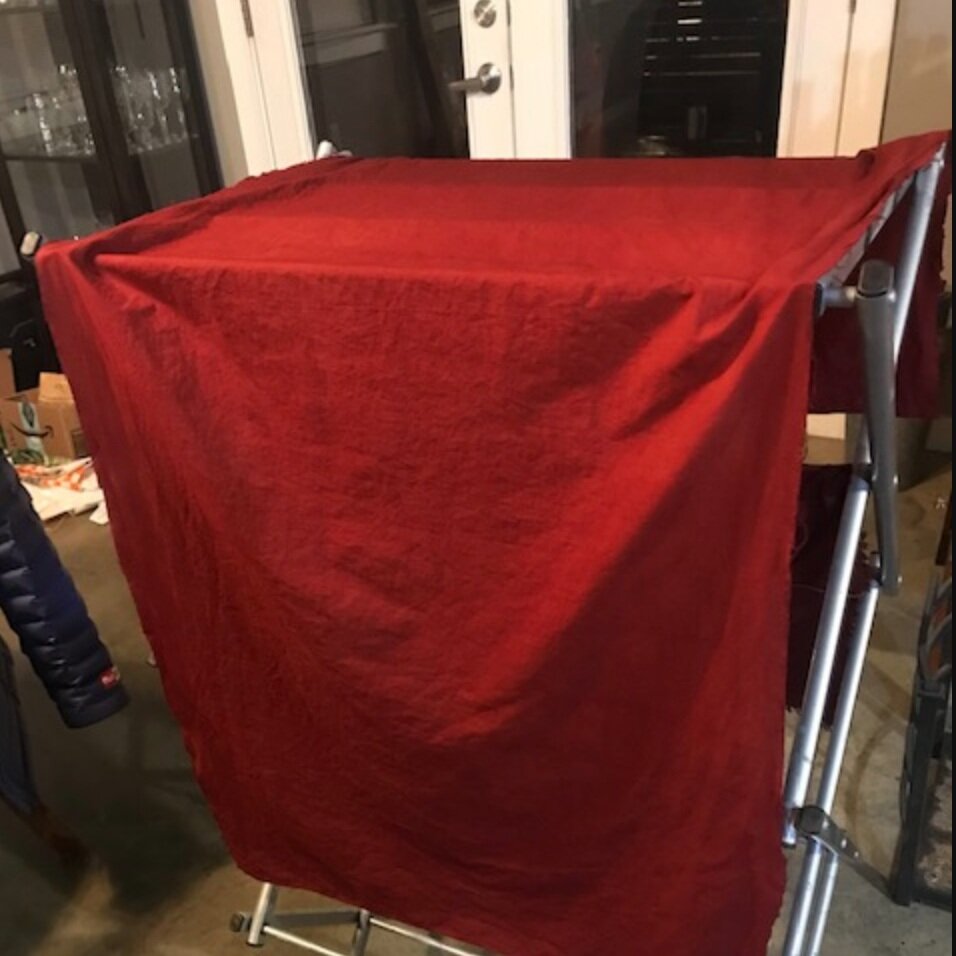
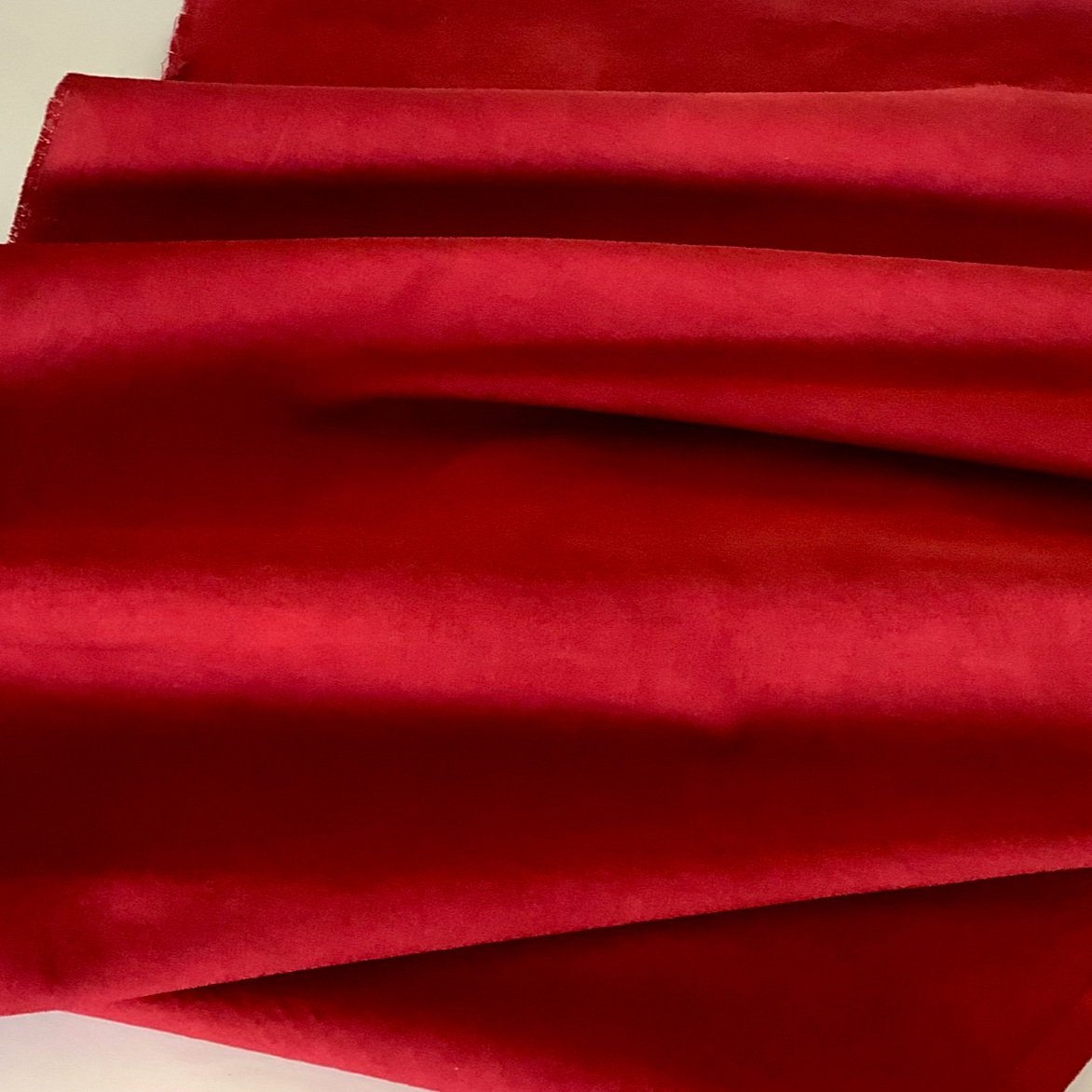
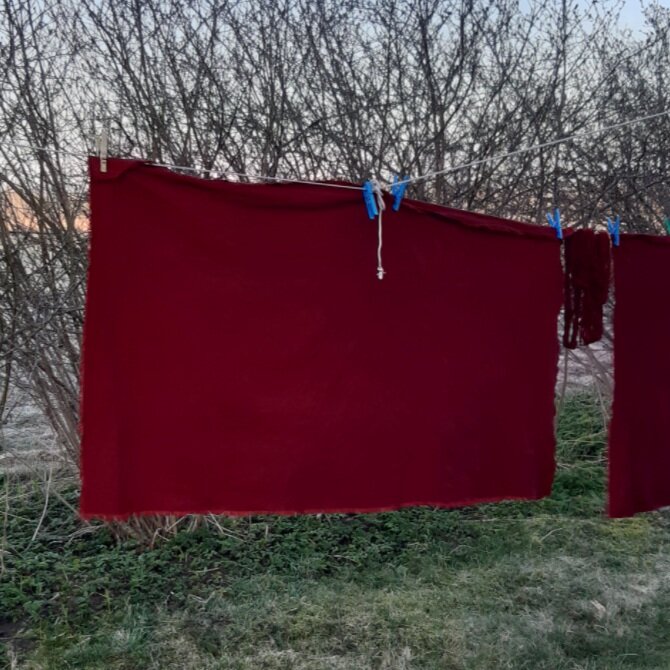
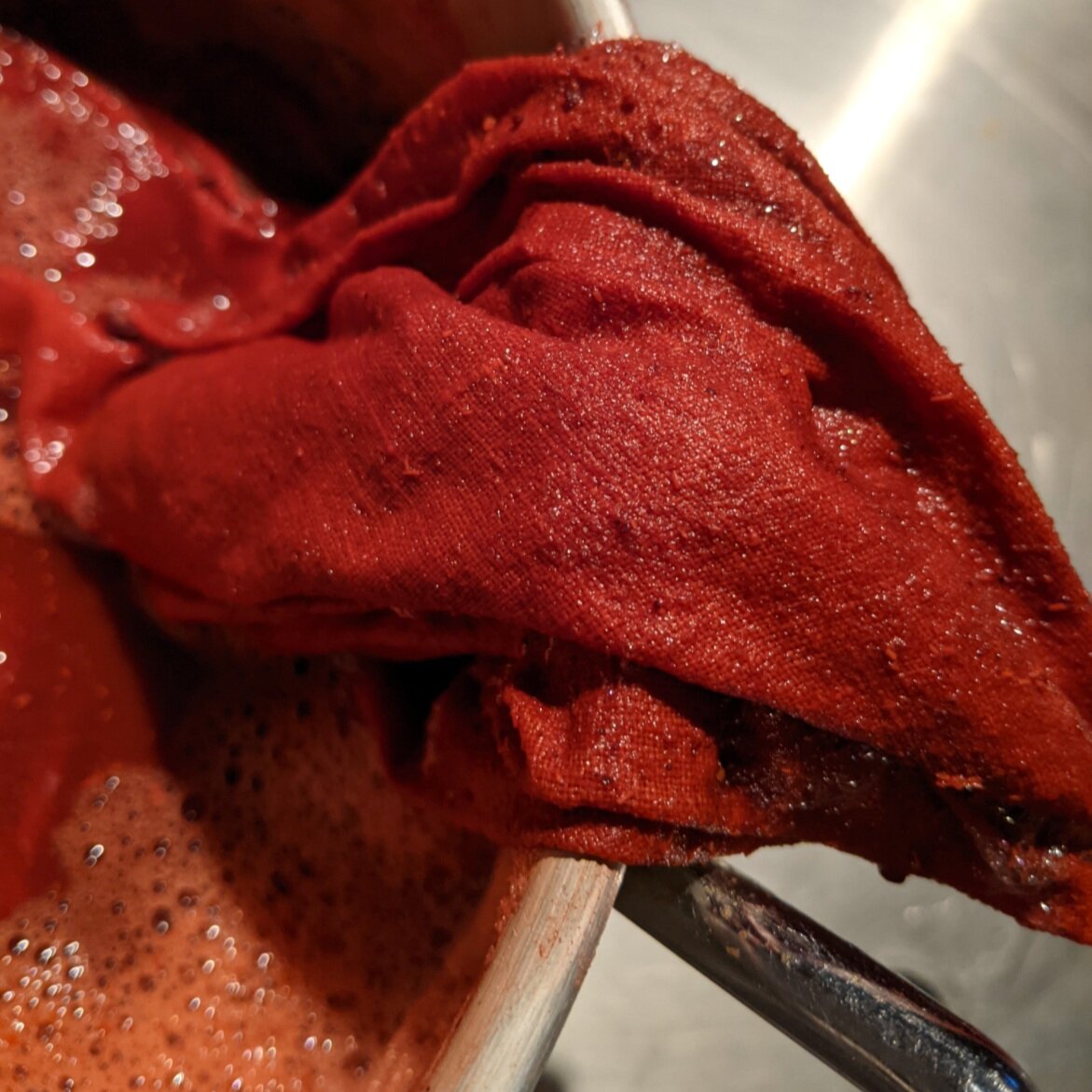
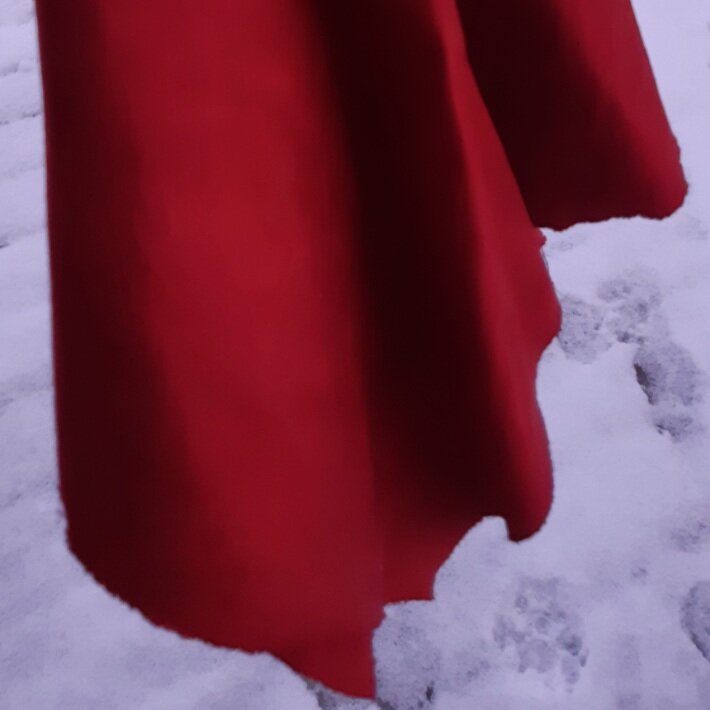
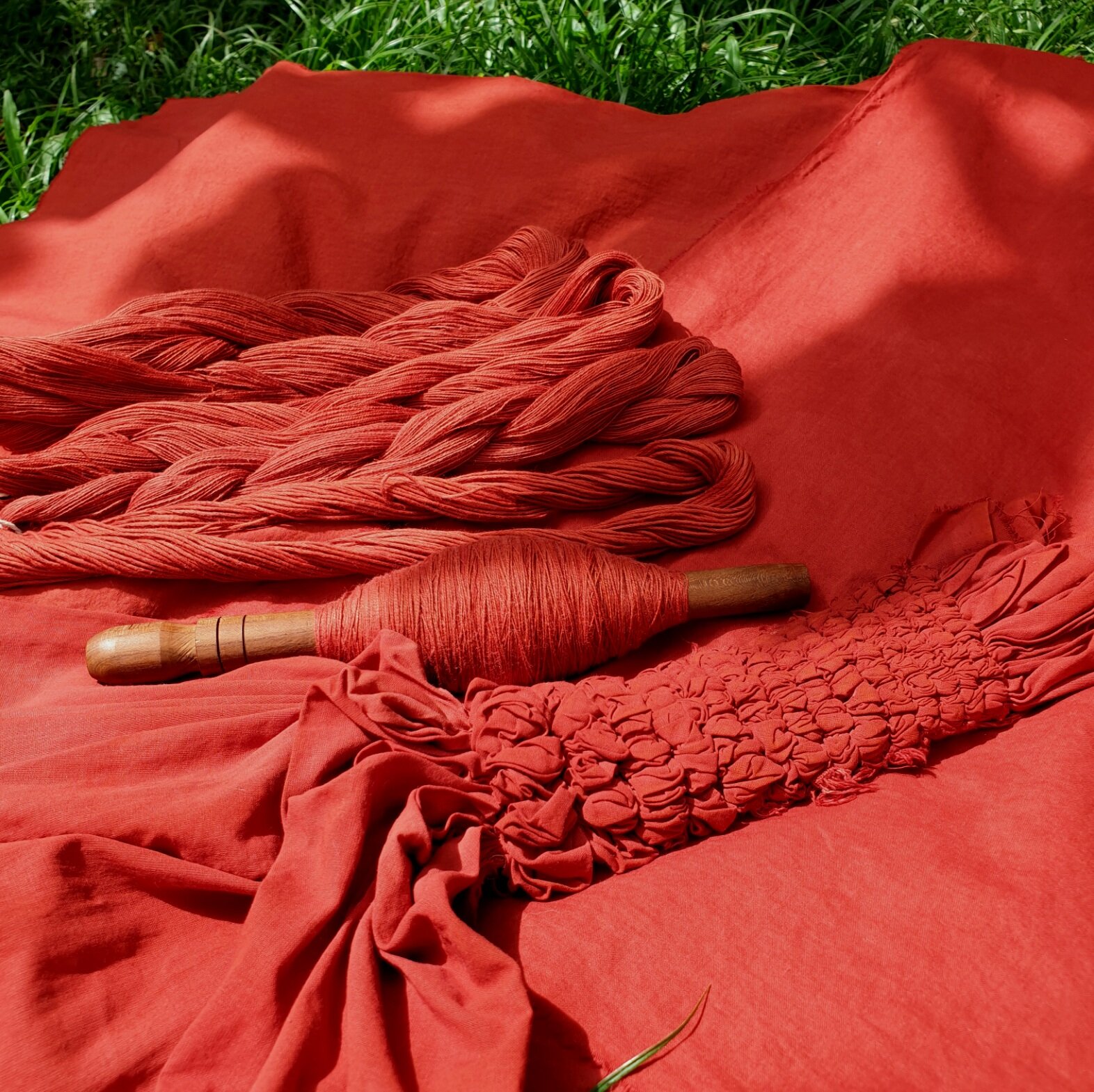

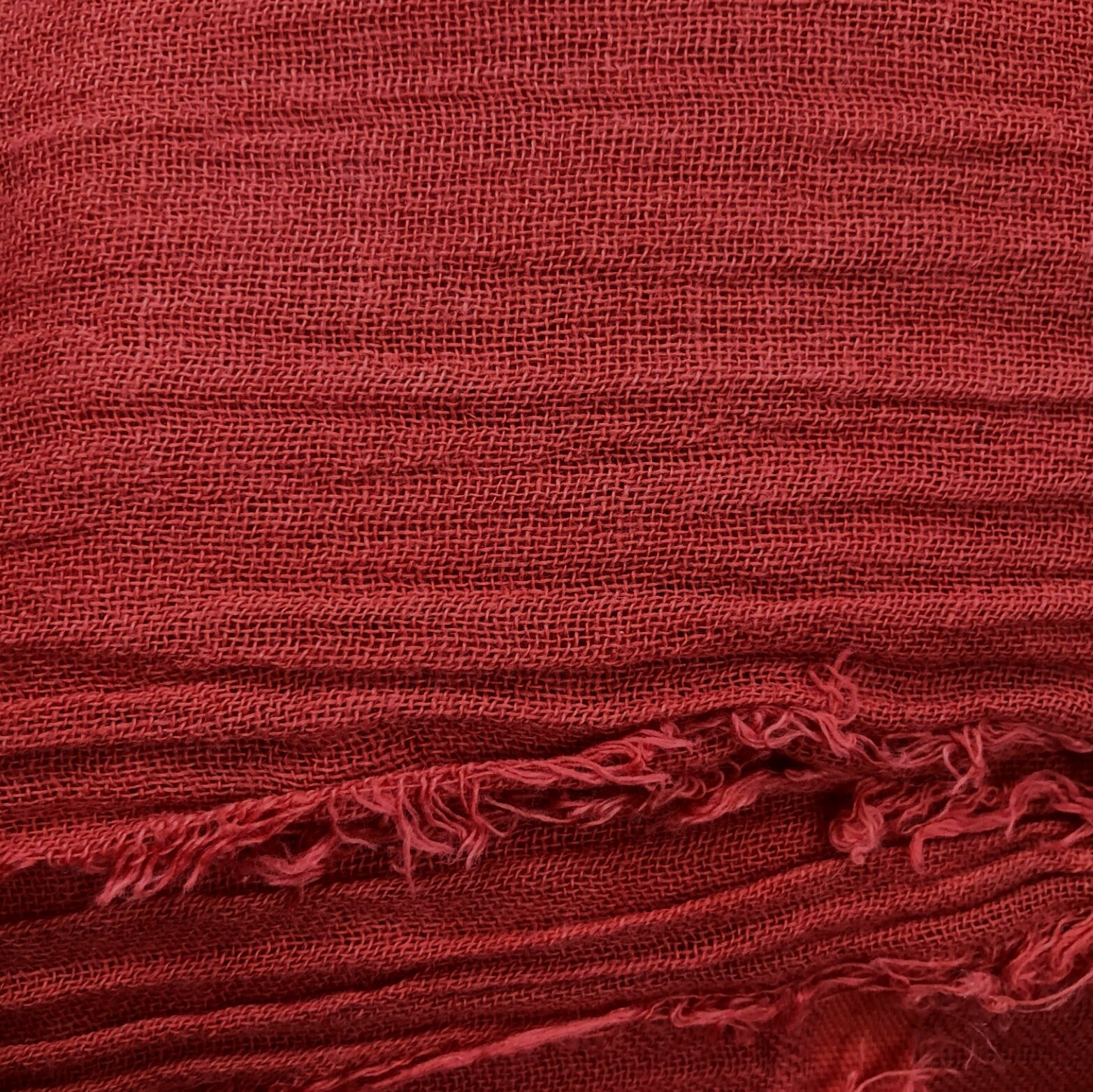
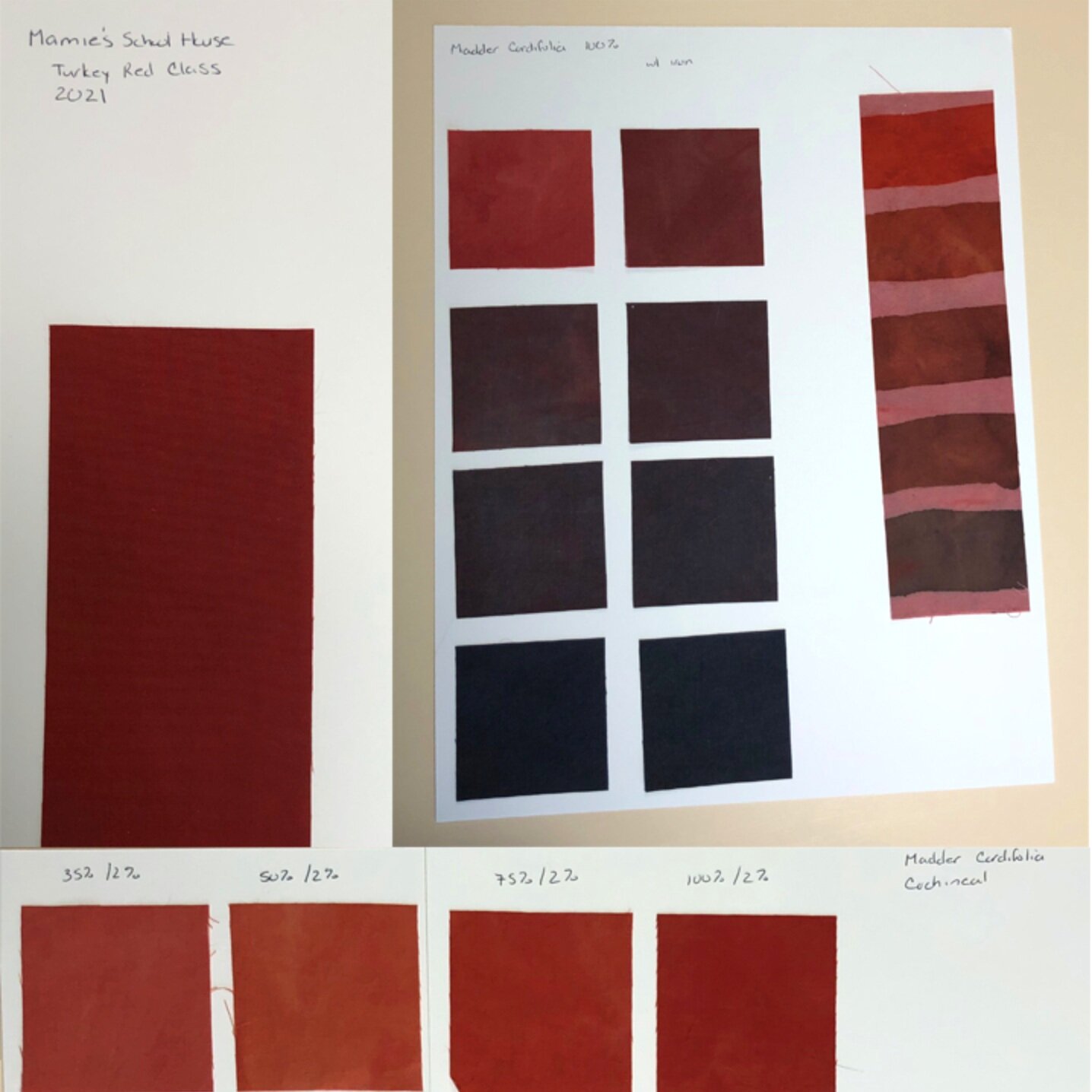
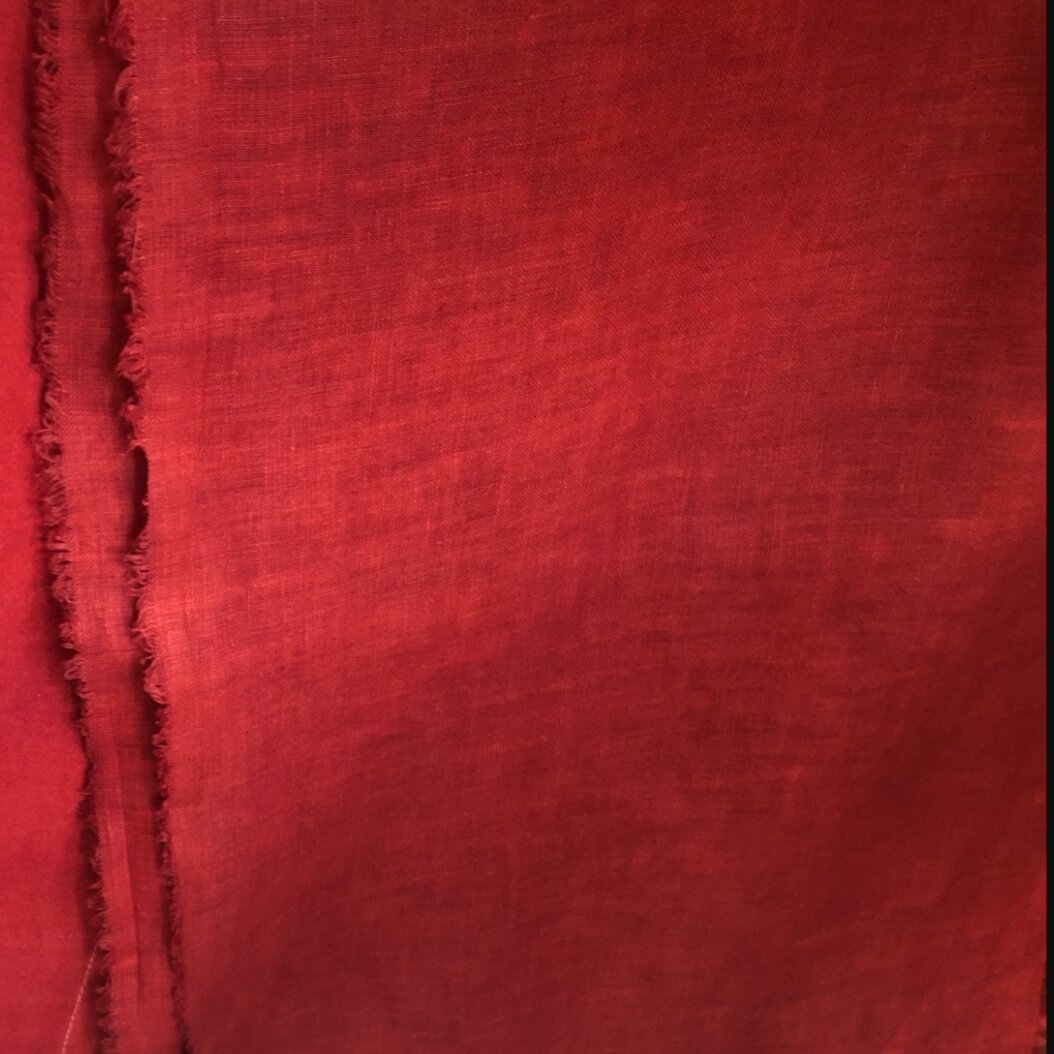
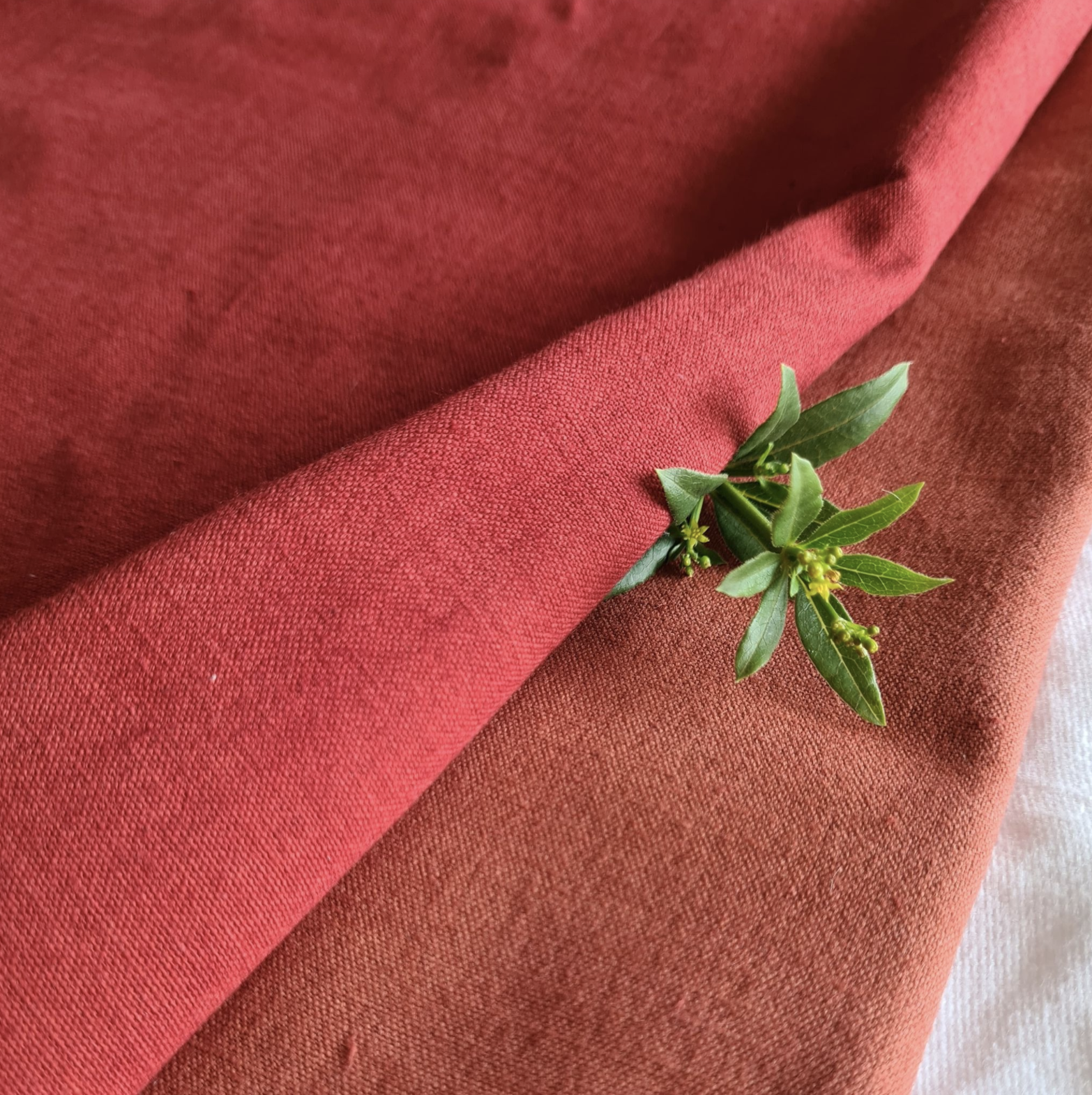

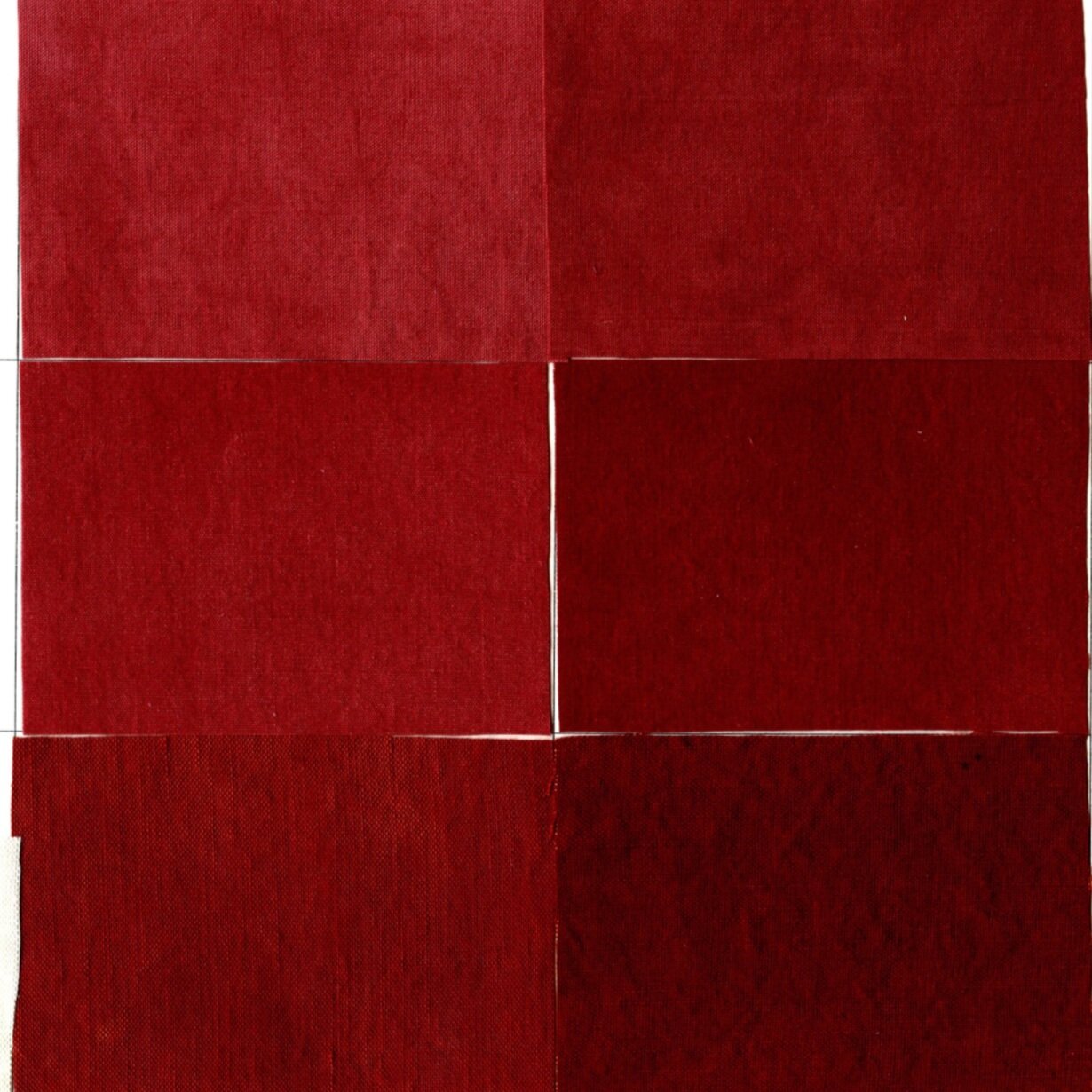
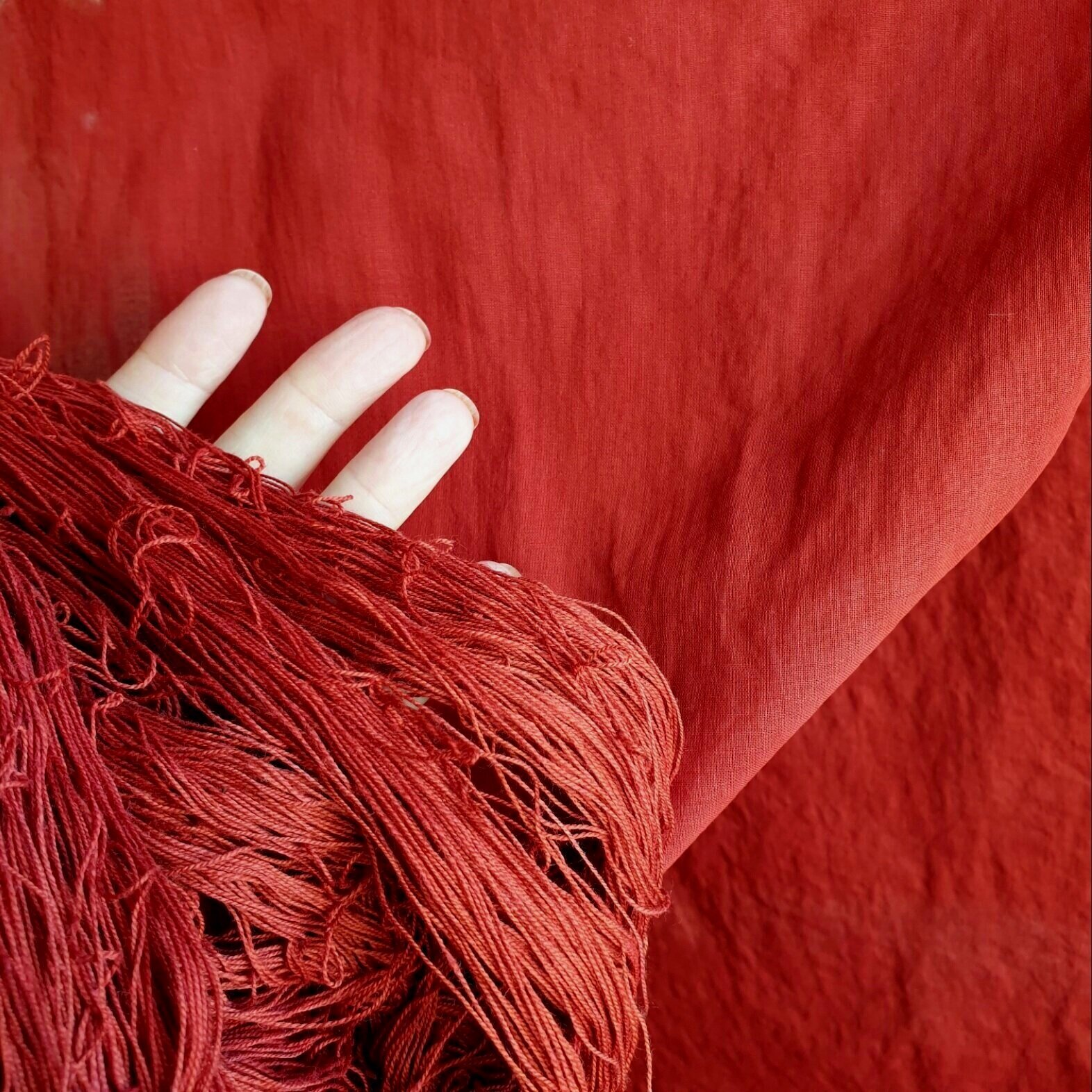

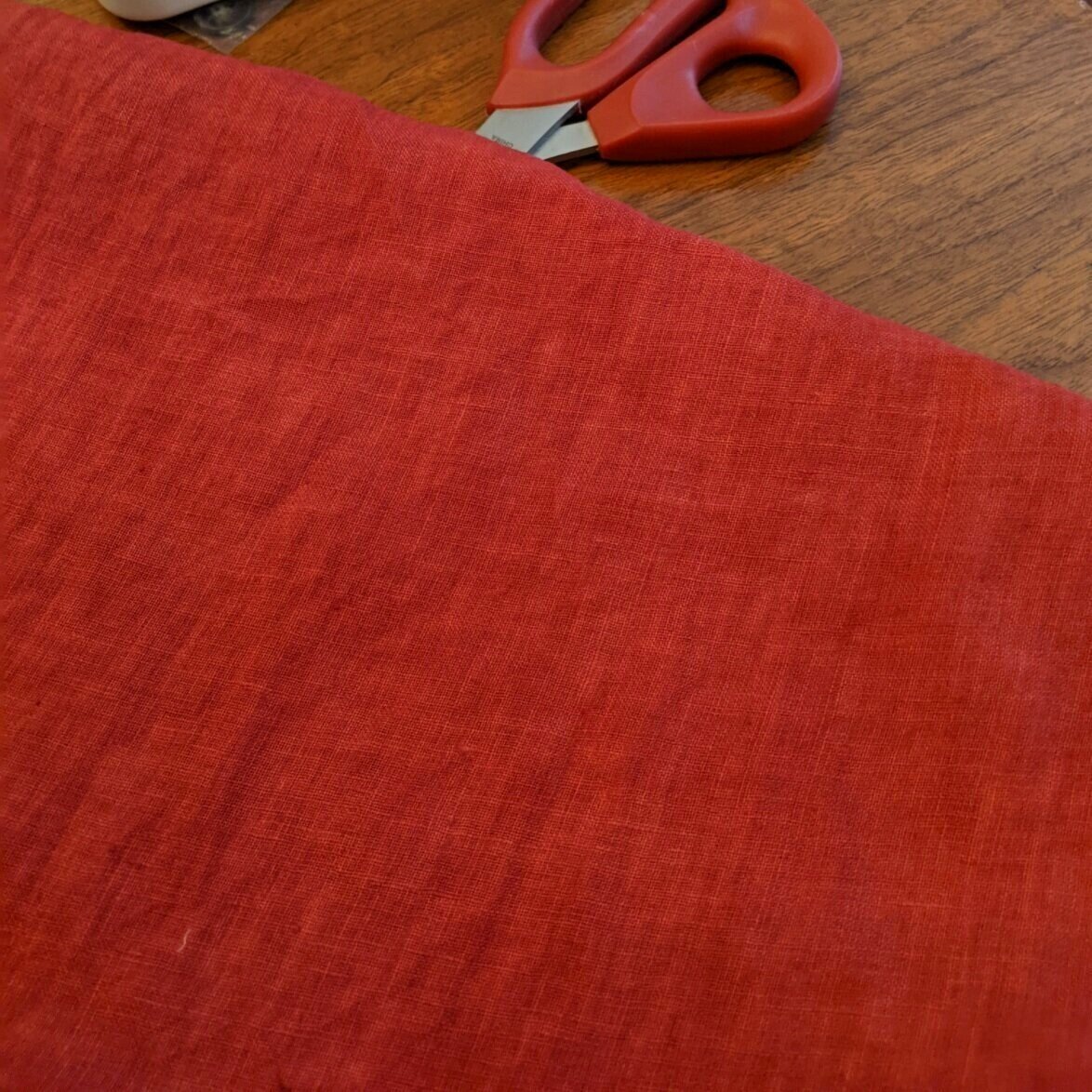
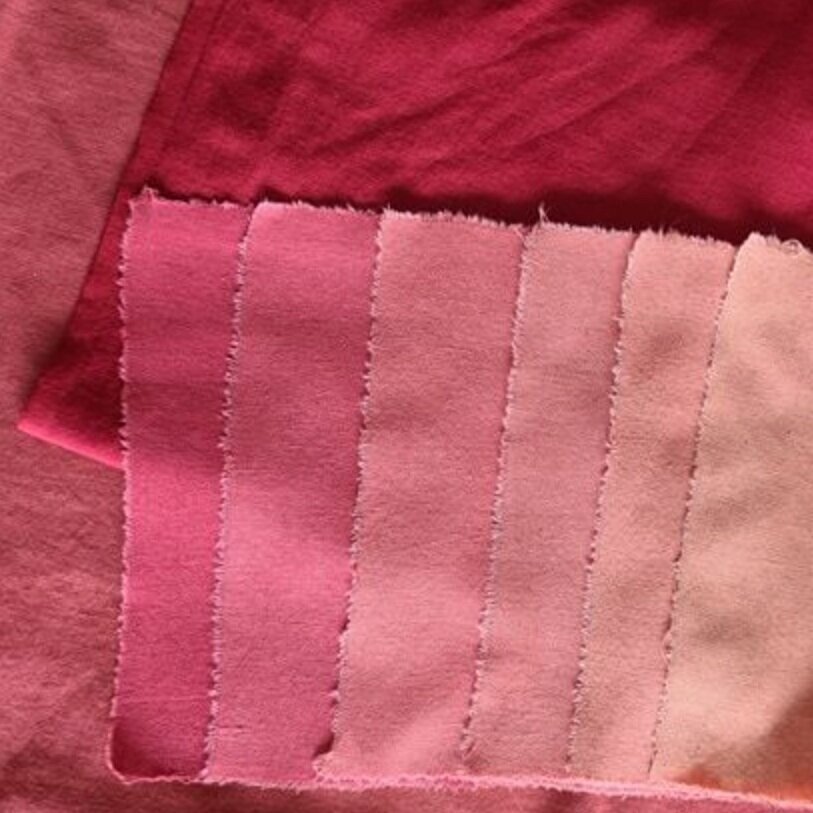
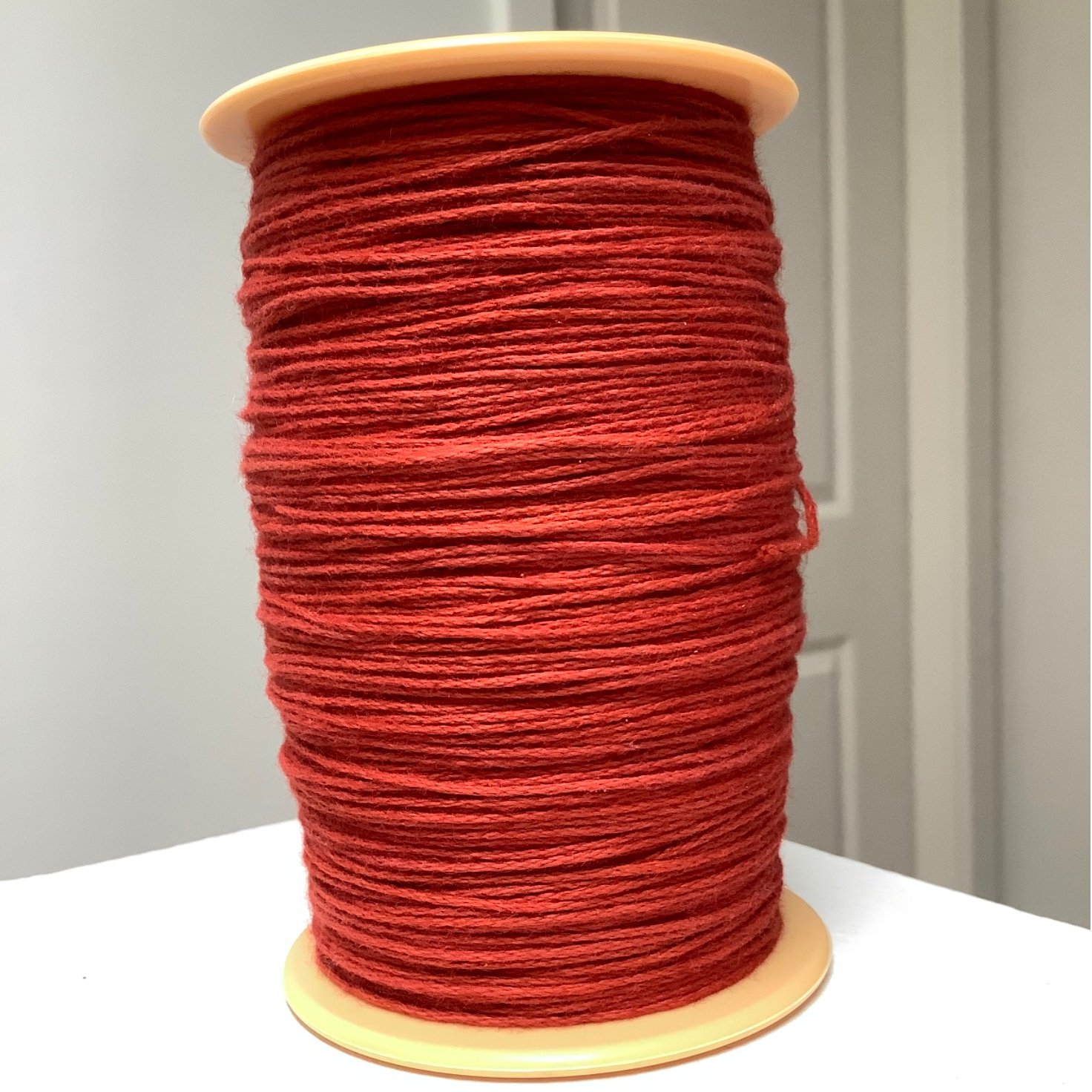
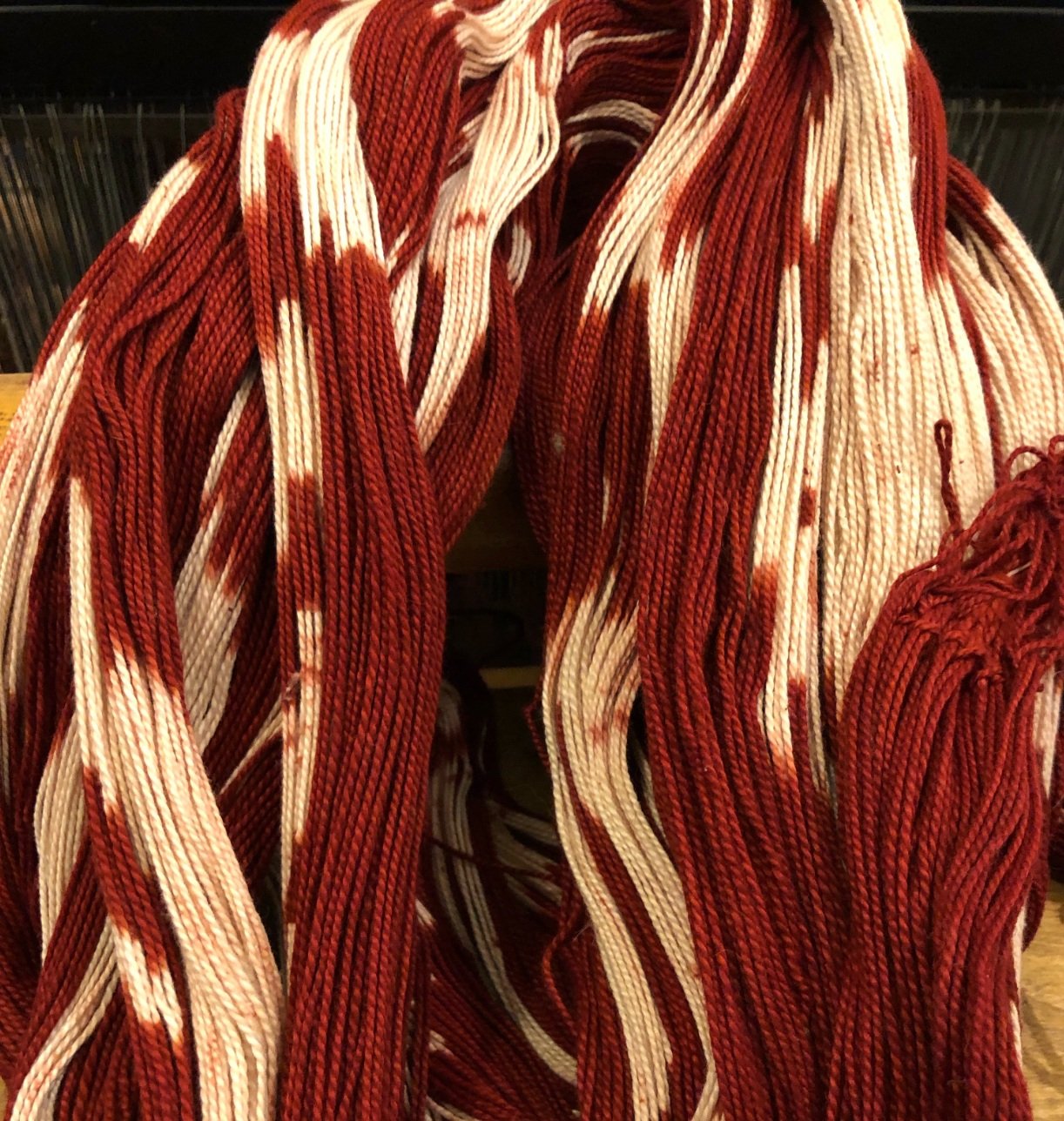
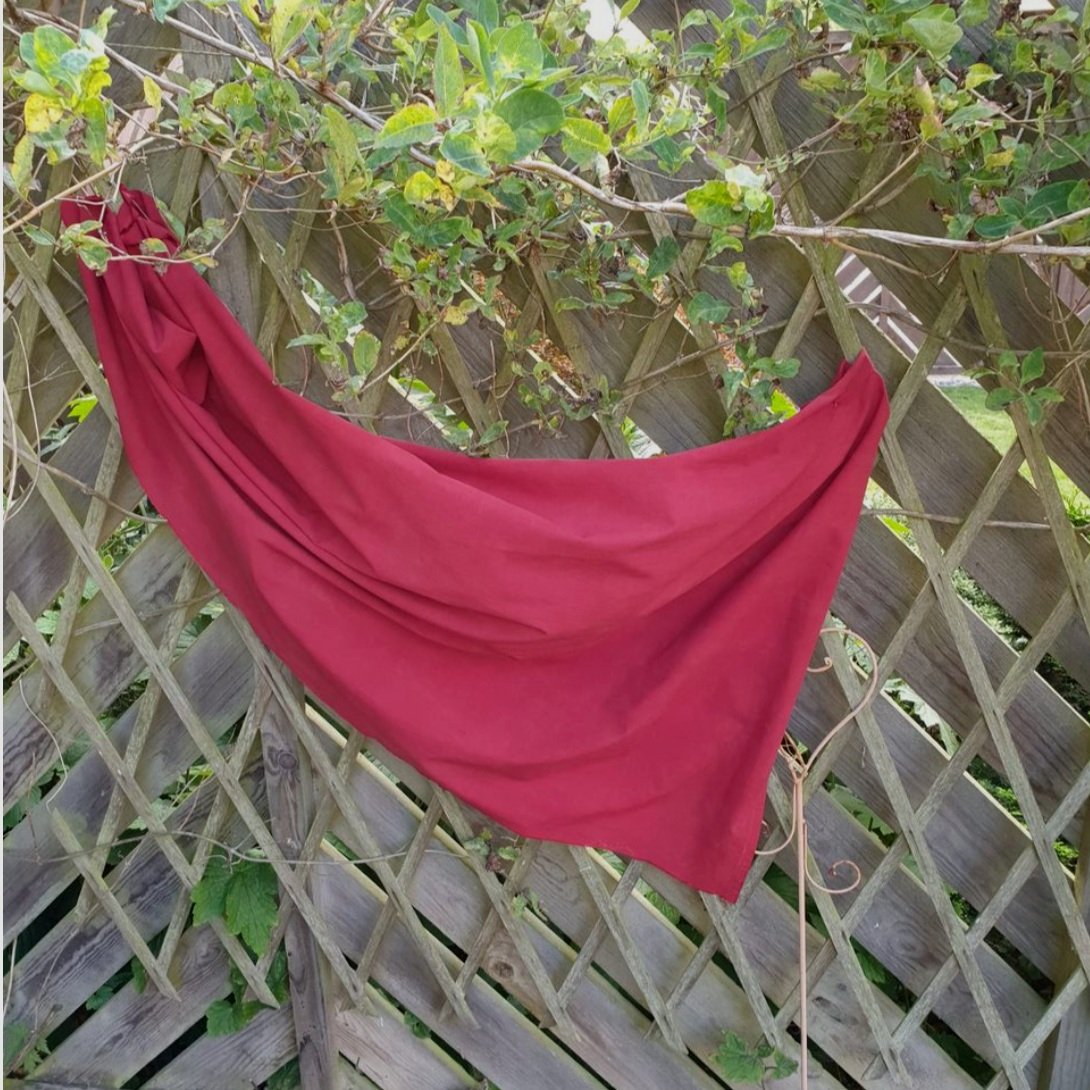
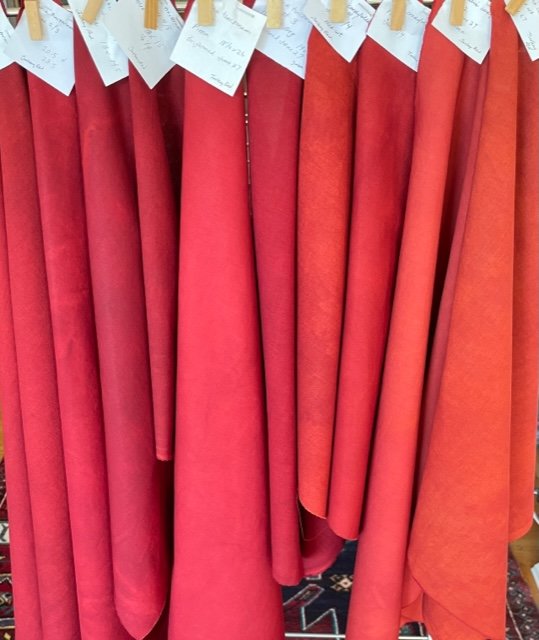

course structure…
This course is entirely self-directed (no instructor support), however all lesson materials are thorough, very clear, and self-explanatory. Following the materials I provide will result in excellent results and lots of new knowledge.
Lessons take approximately three weeks from start to finish.
For best results, this process requires a commitment to working to an optimal schedule. There are a couple of steps where delays can adversely impact results - they are highlighted in the course, so that you have plenty of notice. A timeline of the entire process is available with the first lesson, to facilitate organizing your schedule.
The instructions for each step are published in a series of lessons - each one well in advance of when it is needed. However, it is a completely self-paced online course - you decide when you start and when you finish.
Course materials include 12 detailed tutorial videos, multiple reference documents, and full written instructions for the Turkey Red process.
curriculum…
I never teach a ‘paint by numbers’ approach, but instead share methods along with why it is done a certain way (the historic context, as well as the basic chemistry of the materials and process), so that you are empowered to fully understand a process for a strong foundation for your own experiments.
Available on Registration
Introduction & Preparation
Equipment list, supplies list, fibre list
Preparatory scouring exercise
available Week 1
Instructor introduction & orientation
Natural dye safety
Timeline of Turkey Red Dye steps (to help organize your schedule)
Turkey Red Dye history & chemistry
available weeks 1-3
Turkey Red Dye steps 1 through 9 (each step includes one or more demonstration videos, and detailed written instructions)
Available weeks 3-4
Testing for Turkey Red
Bibliography of suggested additional reading
Student results
Conclusion
supplies…
As this is a course for intermediate to advanced natural dyers, you likely already have many of the supplies, and the necessary equipment, so it is difficult to estimate an average cost for additional supplies that possibly may be needed. Instead, below is a list of required supplies. Actual quantities, for a given weight of fibre, are provided to registered students only. You can then easily scale down or up, depending on the weight of fibre you may wish to dye through this course.
closely woven cotton (this is not a method for protein fibres); beautiful results also can be achieved on some smoother linens and other cellulose fibres
your preferred cellulose scouring supplies
madder (preferably Rubia tinctorum, but cloth in some images here were with Rubia cordifolia - differences are discussed in the course, and beautiful results can be achieved with either, but I recommend R. tinctorum); all measures in the course are for ground/powdered roots (not fresh roots, not root chips, not Madder extract) - I can not emphasize enough the importance of mastering the Turkey Red Dye technique first with powdered dye, before then adding a complicating variable, such as working with roots
castor oil (not sulfonated castor oil, not Turkey Red Oil, just plain castor oil)
potassium aluminum sulfate/alum
oak gall tannin
sodium hydroxide/lye
sodium carbonate/soda ash
calcium carbonate/chalk
white vinegar
pH neutral detergent
soft water (only a moderate volume is required, as any water can be used for many of the steps; where soft water is required, instructions for how to source/make your own with easily available supplies are included in the course)
values…
This course prioritizes your safety, ecological protection, proper technique, and respect for the amazing natural dye lineage of which we are just the latest beneficiaries.
In a world suffering from innumerable human-caused ecological catastrophes, natural dyeing is one tool for helping us to reestablish a meaningful, respectful partnership with Nature’s gifts and with our shared creative human heritage, and for aiding a global industrial transformation away from intensely polluting petrochemical-derived synthetic dyes to sustainable textile production.
pricing & registration…
Students with a billing address in Canada must register through this link, where the relevant Canadian provincial/territorial taxes (if any) are automatically collected and remitted to the government in accordance with Canada Revenue Agency rules for digital products/services.
Students with a billing address outside of Canada must register through this link, where the relevant tax for the student’s jurisdiction (if any) is automatically collected and remitted directly to the appropriate government by Teachable, the online platform used to deliver the course.
